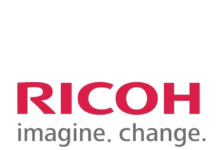Vaughan Patterson, sales manager of the Production Printing Business Group at Ricoh SA, discusses the question: Are CXM and document-driven processes the perfect storm to reboot the transactional print opportunity?
For years transactional output – bills, statements, letters, policy documents and so on – has been seen as a poor relation of marketing communications – if indeed it has any relationship at all. However, a perfect storm could be brewing as recent developments in marketing thinking, combined with the latest digital printing technologies may just be about to propel this sector of the printing industry to the forefront.
Customer Experience Management – the next big thing for marketers?
More and more organisations are now focused on the need to provide a better total customer experience – as a means not only to secure customer loyalty in difficult economic times, but also to create competitive advantage. In fact, in ultra-competitive industries such as insurance, energy and financial services the quality of the customer experience may well be one of the only ways of differentiating from your competition. According to Marketing Week: Over the last few decades, we have seen competitive advantage moving from the manufacturing and distribution sectors (think Ford or Tesco) to controlling or using information (Google or MBNA). Yet the future may see customer experience become the differentiating source of success and dominance.
The latest research from IDC, sponsored by Ricoh (Organizational Blind Spot: The Role of Document-Driven Business Processes in Driving Top-Line Growth, IDC September 2012) identifies how customer-facing document processes have a major impact on the bottom line. In particular: Among consumers who are dissatisfied with companies’ document processes, 60,1% would switch to another provider and 56,8% would likely tell others about their dissatisfaction.
Transactional often overlooked
Customer documents – the bills, statements, letters, formal communications – are a key element of document processes. Therefore transactional documents have a key but often overlooked role in customer experience. Its known as the iceberg effect because transactional documents are below the waterline and out of sight of marketing departments.
Bank statements are a prime example. It’s these types of document that customers will pay more attention to. In the UK energy bills are a good example and according to Matt Swain, associate director of document outsourcing at InfoTrends, people will spend up to four minutes reading and reviewing those documents and open and read 95% of those transactional documents.
According to InfoTrends, despite many years of pressure on consumers to go paperless, printed transactional statements still account for 85% of all statements in 2011, and paper-based delivery of transactional documents in the US is forecast to decline by only 5,2 % from 2010 to 2015. Interestingly the total volume of transactional communications is forecast to rise in this period by over 3%.
The perfect storm
First: don’t think transactional document. Think customer communications. Transactional does not have to mean printed. Increasingly, documents are becoming multichannel. With the latest workflows and document creation technologies customer documents can be electronic, mobile and printed. And offline can be integrated with online for a consistent and enhanced customer experience.
Second: transaction document production should be seen as a way to generate new business opportunities and not just as a cost centre.
Third: consider consolidating and merging messages. Marketing departments already use transactional mailings to get across key offers and messages but this is usually a separate activity, where transactional documents are often delivered with unpersonalised inserts and flyers. Sometimes this is even a separate mailing.
Fourth: harness the latest digital technologies. Traditionally transactional documents are printed in mono on headed paper. However this restricts flexibility and makes it difficult to use colour effectively in documents. Using the very latest workflows and colour digital printing it is now cost-effective to personalise every part of every document. This means that messages can be consolidated which not only reduces cost but also creates a more concise, personalised communication.
Finally, using the latest precision marketing techniques, organisations can introduce better targeting which not only reduces waste but can also increase response rates and, above all, return on investment (ROI). For example, an organisation could send out a document with a different look and feel for VIP clients than for low-value clients.
Maybe the time is right for organisations to exploit the conditions of the perfect storm to reinvent transactional documents into a more powerful, more effective customer communications vehicle, no longer the poor relation but central to the business strategy.





















